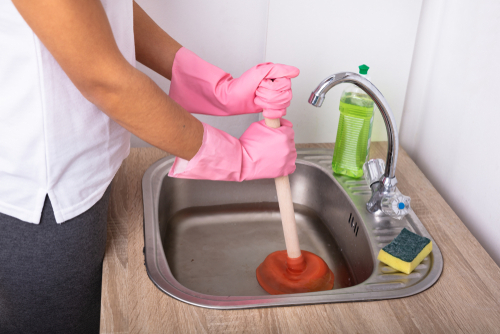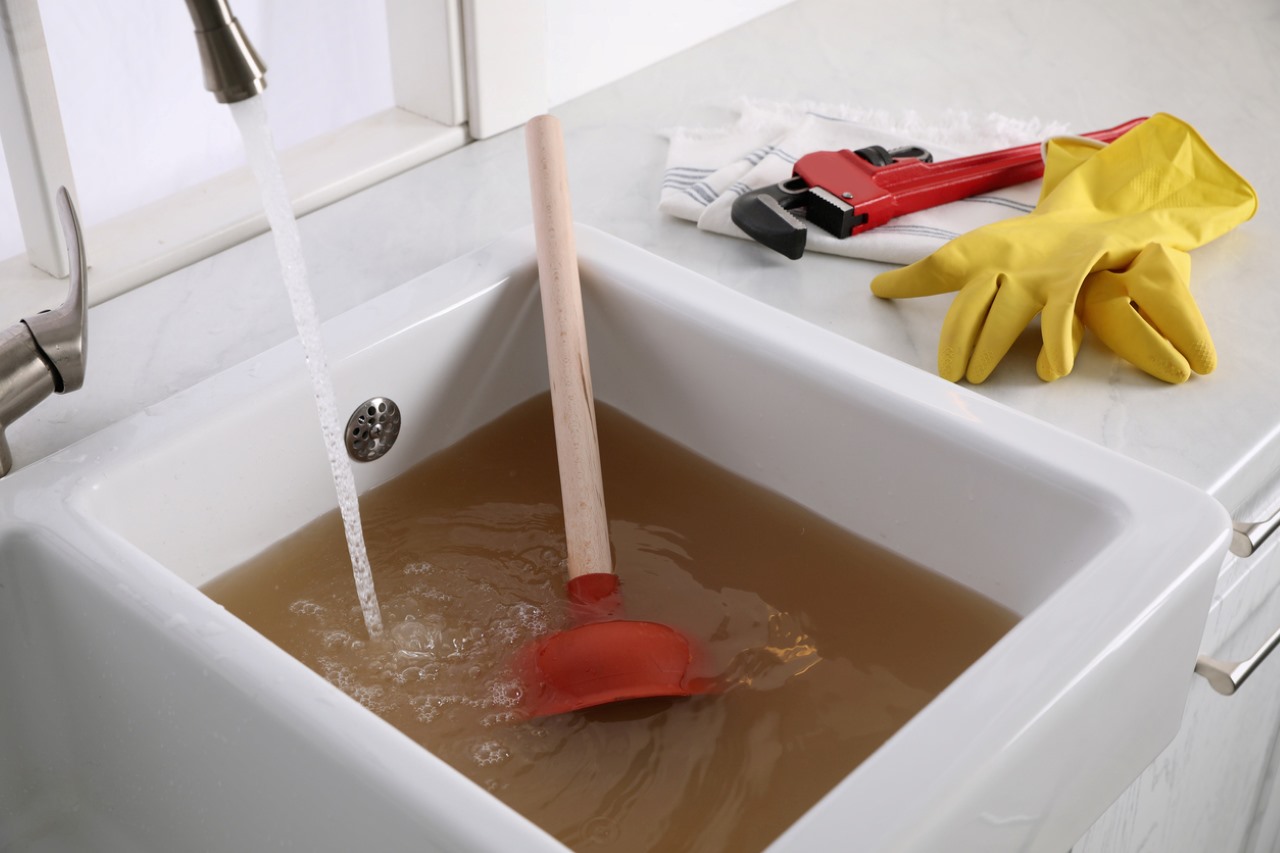Ways to Successfully Use Plungers and Drain Cleaners: Pro Guidance
Ways to Successfully Use Plungers and Drain Cleaners: Pro Guidance
Blog Article
Right here on the next paragraphs you will find additional reliable data with regards to Tips on How to Effectively Use a Plunger.

Introduction
Correct upkeep of house drains pipes is crucial for protecting against obstructions and making certain smooth water flow. Among the secret tools in every home owner's toolkit is the bettor, along with numerous drainpipe cleansers created to take on stubborn blockages effectively. This short article discovers exactly how to utilize plungers and drain cleaners efficiently to keep your drains moving openly.
Area 1: Understanding Plungers
Types of Plungers
There are a number of kinds of bettors available, each developed for different types of drains pipes and blocks. The most usual types consist of mug plungers, flange plungers, and accordion plungers.
How Plungers Work
Plungers work on the concept of creating pressure and suction to dislodge clogs. When effectively applied over a drainpipe, they develop a vacuum that can pull out debris or separate clogs.
Picking the Right Plunger
Selecting the appropriate bettor depends upon the type of drainpipe and the nature of the clog. Mug plungers are excellent for sinks and bathtubs, while flange plungers are much better fit for toilets as a result of their layout.
Common Mistakes with Bettors
Avoiding these mistakes makes certain effective plunging: improper seal around the drain, not enough force, and unclear bordering debris.
Section 2: Making Use Of Plungers Effectively
Prep work
Before diving, guarantee the bettor covers the drainpipe completely and forms a tight seal. Clear any type of visible debris around the drainpipe opening.
Strategy
Start with mild diving activities to construct suction. Boost pressure slowly, utilizing a constant rhythm. Repeat as needed till the drainpipe removes.
Fixing Tips
If plunging does not work, attempt adjusting the seal, applying oil jelly for a far better seal, or making use of a different kind of plunger.
Section 3: Recognizing Drain Cleaners
Kinds Of Drainpipe Cleaning Company
Drain pipes cleansers can be chemical or enzymatic. Chemical cleaners utilize solid chemicals to dissolve blockages, while enzymatic cleaners utilize natural enzymes to break down organic matter.
How Drainpipe Cleansers Job
Chemical cleansers respond with clogs to dissolve them, while enzymatic cleaners break down natural materials like hair and oil without hurting pipes.
Safety Considerations
Always wear gloves and eye security when making use of chemical drainpipe cleaners. Make sure adequate ventilation and comply with supplier guidelines carefully.
Eco-Friendly Alternatives
Consider making use of vinegar and cooking soft drink or enzyme-based cleansers for environmentally friendly choices that are much safer for pipelines and the setting.
Area 4: Using Drainpipe Cleaning Company Properly
Application Methods
Pour chemical cleansers directly into the drainpipe opening. Enable them to help the advised time prior to flushing with warm water. Chemical cleaners need to sit over night.
Safety measures
Prevent blending various sorts of cleansers, as this can produce poisonous fumes. Never utilize chemical cleansers along with a bettor, as spilling can take place.
Dealing With Stubborn Clogs
For persistent clogs, consider using a pipes serpent or calling a specialist plumbing to avoid damage to pipelines.
Final thought
Finally, comprehending exactly how to utilize bettors and drainpipe cleaners properly is essential for preserving healthy plumbing systems. By choosing the right tools and strategies, home owners can take on small clogs and protect against significant pipes concerns down the line.
How to Use a Plunger to Unclog a Drain
The humble plunger is a simple yet effective tool for breaking clogs in sinks, tubs and toilets. This handy tool is easy to use. You can make the most of its power if you understand how it works. Ready to dive in? Here’s what you need to know.
Safety First!
Never use a plunger with drain chemicals. Water will splash as you work, and the chemicals can spatter, burning skin and eyes. It’s a good idea to use rubber gloves and wear safety goggles when you work on a clog.
Choose the Right Tool for the Job
Plungers come in two different styles. Sinks, bathtubs and showers require a cup plunger. Like its name suggests, the rubber end is shaped like a cup. Use a flange plunger on toilets. These plungers have a rubber funnel extending from the cup. A plunger needs to be big enough to cover the drain.
Ready, Set, Plunge!
Coat the rim: Coat the plunger rim with petroleum jelly. This helps make a better seal.
Block outlets: Hold a wet rag over nearby outlets such as the overflow vent or the drain in a second sink.
Release air: Insert the plunger at an angle into the water. Water will displace air in the cup. A water-filled cup is more forceful than one filled with air.
Keep the plunger upright: Hold the plunger perpendicular to the drain. Use fast, forceful strokes, but make the first stroke gentle. The first stroke can create a splash if the cup still contains air. Thrust the plunger 15 to 20 times.
Snap off the plunger: The final stroke should be a strong upward motion that ends when the plunger snaps off the drain.
Repeat the process: you may need to repeat this sequence several times. When the water drains away, your work is done. High-five! https://plumbernw.com/blog/how-to-use-a-plunger-to-unclog-a-drain/

Application Methods
Pour chemical cleansers directly into the drainpipe opening. Enable them to help the advised time prior to flushing with warm water. Chemical cleaners need to sit over night.
Safety measures
Prevent blending various sorts of cleansers, as this can produce poisonous fumes. Never utilize chemical cleansers along with a bettor, as spilling can take place.
Dealing With Stubborn Clogs
For persistent clogs, consider using a pipes serpent or calling a specialist plumbing to avoid damage to pipelines.
Final thought
Finally, comprehending exactly how to utilize bettors and drainpipe cleaners properly is essential for preserving healthy plumbing systems. By choosing the right tools and strategies, home owners can take on small clogs and protect against significant pipes concerns down the line.
How to Use a Plunger to Unclog a Drain
The humble plunger is a simple yet effective tool for breaking clogs in sinks, tubs and toilets. This handy tool is easy to use. You can make the most of its power if you understand how it works. Ready to dive in? Here’s what you need to know.
Safety First!
Never use a plunger with drain chemicals. Water will splash as you work, and the chemicals can spatter, burning skin and eyes. It’s a good idea to use rubber gloves and wear safety goggles when you work on a clog.
Choose the Right Tool for the Job
Plungers come in two different styles. Sinks, bathtubs and showers require a cup plunger. Like its name suggests, the rubber end is shaped like a cup. Use a flange plunger on toilets. These plungers have a rubber funnel extending from the cup. A plunger needs to be big enough to cover the drain.
Ready, Set, Plunge!
Coat the rim: Coat the plunger rim with petroleum jelly. This helps make a better seal. Block outlets: Hold a wet rag over nearby outlets such as the overflow vent or the drain in a second sink. Release air: Insert the plunger at an angle into the water. Water will displace air in the cup. A water-filled cup is more forceful than one filled with air. Keep the plunger upright: Hold the plunger perpendicular to the drain. Use fast, forceful strokes, but make the first stroke gentle. The first stroke can create a splash if the cup still contains air. Thrust the plunger 15 to 20 times. Snap off the plunger: The final stroke should be a strong upward motion that ends when the plunger snaps off the drain. Repeat the process: you may need to repeat this sequence several times. When the water drains away, your work is done. High-five! https://plumbernw.com/blog/how-to-use-a-plunger-to-unclog-a-drain/

Hopefully you liked our piece on How to Use a Plunger to Unclog a Toilet or Drain. Thanks a ton for spending some time to read through our content. You should pause to share this blog if you enjoyed reading it. Kudos for your time. Revisit us soon.
Automated Marketing Report this page